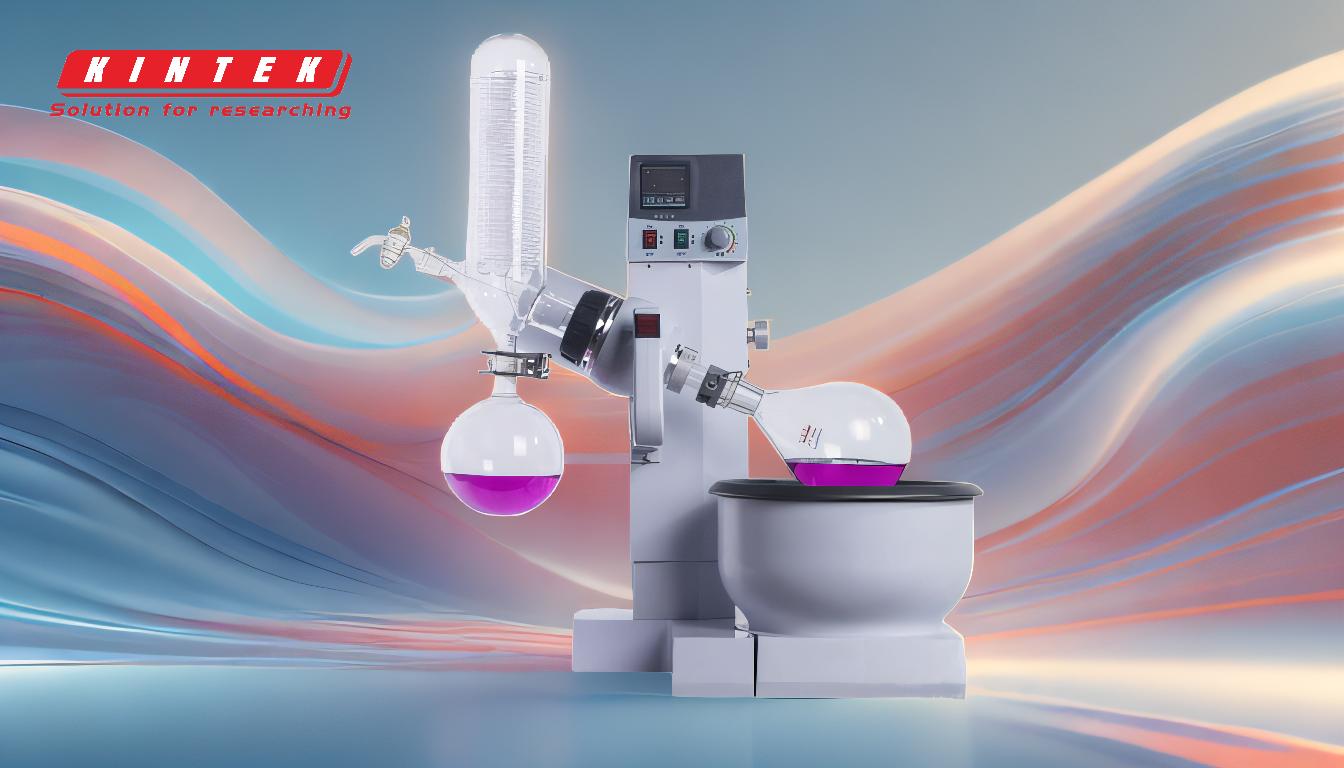Rotary evaporator bumping is caused by rapid boiling of a liquid under reduced pressure or elevated temperature, leading to the formation of large vapor bubbles that violently expel the liquid. This phenomenon is exacerbated by smooth, clean glassware, which lacks nucleation sites for controlled bubble formation. Repeated heating and cooling cycles further increase bumping risks by degassing the liquid and reducing nucleation sites. Preventive measures include controlling temperature and vacuum levels, using boiling chips or traps, and ensuring proper flask size and sample volume. Understanding these causes and implementing mitigation strategies is crucial for safe and efficient rotary evaporation.
Key Points Explained:

-
Rapid Boiling Under Reduced Pressure or Elevated Temperature:
- Bumping occurs when a liquid is heated or its pressure is reduced too quickly, causing it to surpass its boiling point without forming bubbles uniformly.
- This leads to the sudden formation of large vapor bubbles, which violently expel the liquid from the flask.
-
Lack of Nucleation Sites:
- Smooth, clean glassware lacks imperfections or nucleation sites, making it difficult for small bubbles to form initially.
- Once a bubble forms, it grows rapidly, leading to bumping.
-
Degassing and Repeated Heating Cycles:
- Each heating and cooling cycle progressively degasses the liquid, reducing the number of nucleation sites available for controlled boiling.
- This increases the likelihood of bumping with subsequent heating cycles.
-
Preventive Measures:
- Controlled Heating and Vacuum Levels: Gradually increasing temperature and vacuum strength helps maintain a steady evaporation rate and prevents rapid boiling.
- Proper Flask Size and Sample Volume: Using a flask with sufficient capacity (sample volume less than half the flask's capacity) provides enough surface area for controlled evaporation.
- Boiling Chips and Additives: Adding boiling chips or other nucleation agents creates uniform bubble formation, reducing bumping risks.
- Specialized Traps and Condenser Arrays: These tools help manage difficult samples and prevent liquid expulsion during evaporation.
-
Safety Considerations:
- Bumping poses significant safety hazards, including the risk of burns or exposure to hazardous chemicals.
- Proper equipment setup, such as using boiling tubes or flasks and avoiding direct exposure to heated test tubes, minimizes risks.
-
Role of Centripetal Force in Rotary Evaporators:
- Rotary evaporators suppress bumping by using centripetal force and friction during rotation, which promotes gentle and uniform evaporation.
- This makes the equipment safer and more user-friendly, even for less experienced operators.
By understanding these key points and implementing appropriate preventive measures, users can effectively mitigate the risks associated with rotary evaporator bumping, ensuring safer and more efficient laboratory operations.
Summary Table:
| Cause | Explanation | Preventive Measure |
|---|---|---|
| Rapid boiling under reduced pressure | Liquid surpasses boiling point, forming large vapor bubbles. | Gradually control temperature and vacuum levels. |
| Lack of nucleation sites | Smooth glassware prevents uniform bubble formation. | Use boiling chips or additives to create nucleation sites. |
| Degassing from repeated heating cycles | Reduces nucleation sites, increasing bumping risk. | Avoid excessive heating cycles; use proper flask size and sample volume. |
| Safety hazards | Risk of burns or chemical exposure due to violent liquid expulsion. | Use proper equipment setup and avoid direct exposure to heated test tubes. |
| Centripetal force in rotary evaporators | Promotes gentle evaporation, reducing bumping risks. | Ensure proper use of rotary evaporator settings and rotation. |
Need help preventing rotary evaporator bumping? Contact our experts today for tailored solutions!










